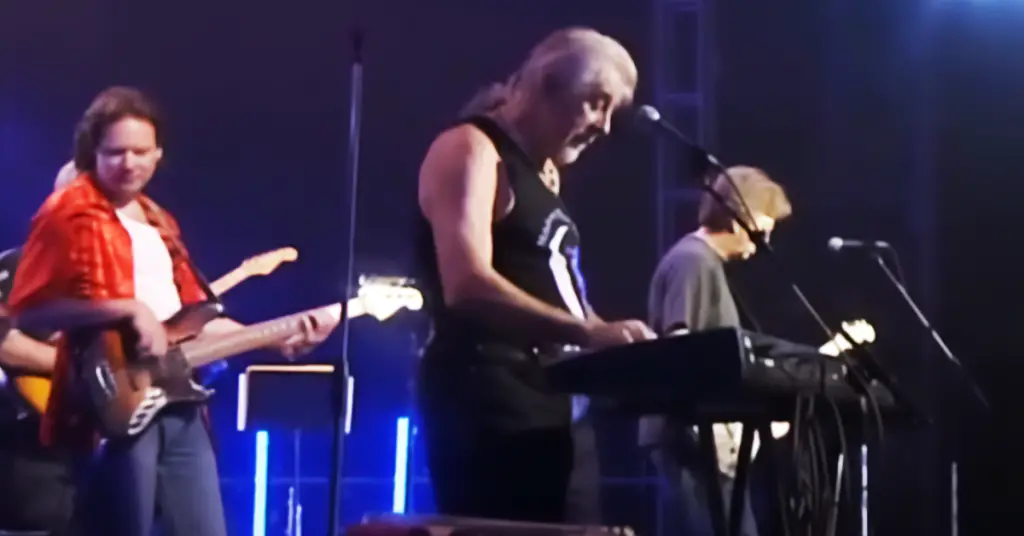Walking With the Godfather of British Blues: My Life with John Mayall
If you’re a blues fan like me, there’s a good chance your record collection has a serious section labeled “John Mayall.” And if it doesn’t—well, you’re in for the kind of discovery that changes everything.
I can say without exaggeration that John Mayall is the reason I fell head-first into the British blues boom—and never climbed out. His music didn’t just teach me how to listen to the blues. It taught me to respect it. And decades later, his records still feel like conversations with a wise old friend who’s seen it all.
My First Encounter with the Bluesbreaker
I was maybe 17 when I bought Blues Breakers with Eric Clapton on a whim. The cover—Mayall reading The Beano comic, Clapton off to the side—looked casual, but when I dropped the needle, I got anything but casual. It was like being hit by a train of tone. Clapton was a firestorm, but Mayall? He was the glue. The architect. The guy who had built a whole damn house so all these legends could step inside and play.

I didn’t realize it then, but I’d just discovered the gateway drug to the blues. That album opened doors to Muddy Waters, Otis Rush, Freddie King, and more. And the more I learned, the more I realized that Mayall wasn’t just riding the wave—he was the wave.
A Band of Legends—Because of Him
You can’t talk about John Mayall without mentioning the Bluesbreakers. His band was basically the minor leagues for blues royalty: Clapton, Peter Green, Mick Taylor, John McVie, Mick Fleetwood, Jack Bruce—you name it. He spotted talent like a blues bloodhound. But more importantly, he nurtured it.
I like to think of Mayall as the Miles Davis of the blues world. Always evolving, always listening, and always surrounding himself with the best players—not because he needed them to shine, but because he wanted to create something bigger than himself.
That’s leadership. That’s love for the music.
The First Time I Saw Him Live
It was in the early ’90s. He was already a legend by then—pushing 60, thin as a rail, hair pulled back in a ponytail, shades on. He walked onto that small stage with a Strat, a keyboard, and a harmonica—and proceeded to blow the roof off.
What stunned me most was his energy. This wasn’t a nostalgia act. This was a man living the blues, breathing it in real time. He switched from keys to harp to guitar like it was nothing, smiling the whole way through. The crowd—young and old—hung on every note.
And when he played “Room to Move,” that hypnotic harp groove kicked in and the place went nuts. It was electric. We were witnessing history—and the man wasn’t slowing down one bit.
Albums That Shaped My Soul
Mayall’s catalog is a goldmine, and I’ve got the vinyl scars to prove it. A Hard Road with Peter Green is one of my all-time favorites—Green’s solos are pure heartbreak. Then there’s Crusade, where a teenage Mick Taylor sounds like he’s already lived ten lifetimes.
But it’s not just the old stuff. Albums like Wake Up Call, Tough, and Nobody Told Me prove that Mayall’s still got fire in his belly. Even into his eighties, he was pushing forward, working with younger players like Joe Bonamassa and Carolyn Wonderland, never content to rest on past glory.
That’s what I admire most—his refusal to sit still.
Why John Mayall Still Matters
In a world of blues imitators, John Mayall is the real deal. He didn’t just bring the blues to Britain—he brought it back to America with new energy. He bridged continents, generations, and styles, always with deep respect for the Black American artists who created the genre.
More than a musician, he’s a teacher. A steward. A lifelong student who turned into the master.
And for fans like me, he’s a reminder that the blues isn’t just music—it’s a way of seeing the world. Honest, raw, and human.
For New Fans
If you’re new to John Mayall, start with Blues Breakers with Eric Clapton. Then dive into A Hard Road and Crusade. From there, check out his later work like The Turning Point (a live, drumless gem) and Wake Up Call. And if you ever get the chance to catch him live—or dig up a good concert film—do it. The man gives everything on stage.
You can explore more of his music and legacy at johnmayall.com.
For me, John Mayall isn’t just a bluesman—he’s the reason I fell in love with the blues. And after all these years, I’m still following that sound, one note at a time.
Thank You
We appreciate your time and dedication to reading our article. For more of the finest blues guitar music, make sure to follow our Facebook page, “I Love Blues Guitar”. We share exceptional selections every day. Thank you once again for your continued support and readership.


Facebook Comments